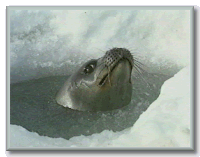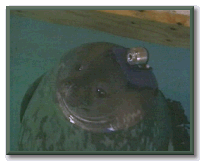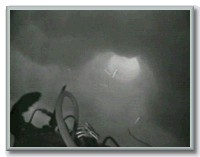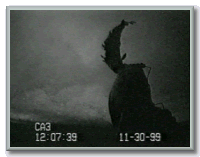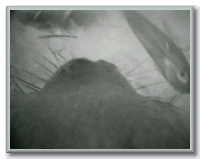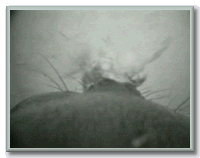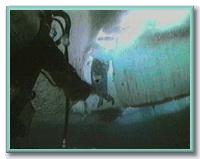In PASSPORT TO ANTARCTICA we saw how researchers study Weddell seals when they emerge onto the ice in the Antarctic spring. We saw how mother seals nurture pups through the first few months of life, and how the pups learn to hold their breath. But no-one really knew what pups or adults did when they dove deep underwater.
In the 1999-2000 research season, scientists made a breakthrough when they figured out how to track Weddells as they dove down below the ice, in search of fish. The researchers mounted lightweight video cameras on small pads which they attached to the seal's head and back. The pads would fall off harmlessly after the experiments were over.
So, for the first time, let's go diving with Weddell seals!
|
Image courtesy of the |
Image courtesy of the |
This rear-pointing camera shows the seal leaving the dive hole. |
Their fishing expeditions can take them 2 miles and last 20 minutes... all on one big breath of air! |
Image courtesy of the |
Image courtesy of the |
And speaking of air, this is how seals' fish for Antarctic cod, their favorite prey. |
They swim about, under the ice, silhouetting the fish against the sunlight filtering down. Catch what's happening? |
Image courtesy of the |
Image courtesy of the |
The seal is blowing bubbles out its nose to flush the cod from its hiding place in a crack in the ice. |
Later, after a successful hunt, it's back up the dive hole, where the researchers are waiting. |
|
|
|
|
WANT TO LEARN MORE?
|
|
Websites
• Studies of Marine Mammals Indicate a "Breathtaking" Ability to Dive to Great Depths This article explains a project where scientists were able to monitor the heart rates and oxygen consumption of Weddell seals. |
![]()
